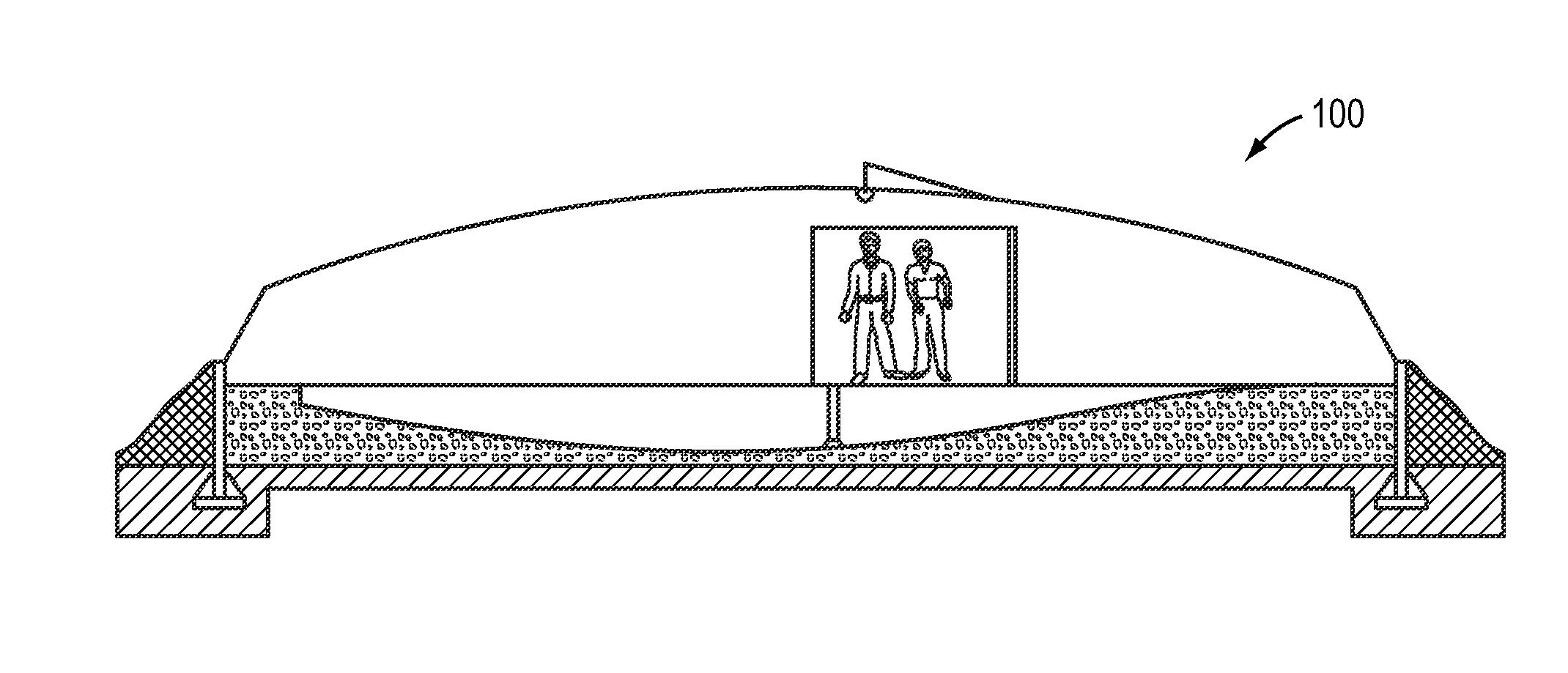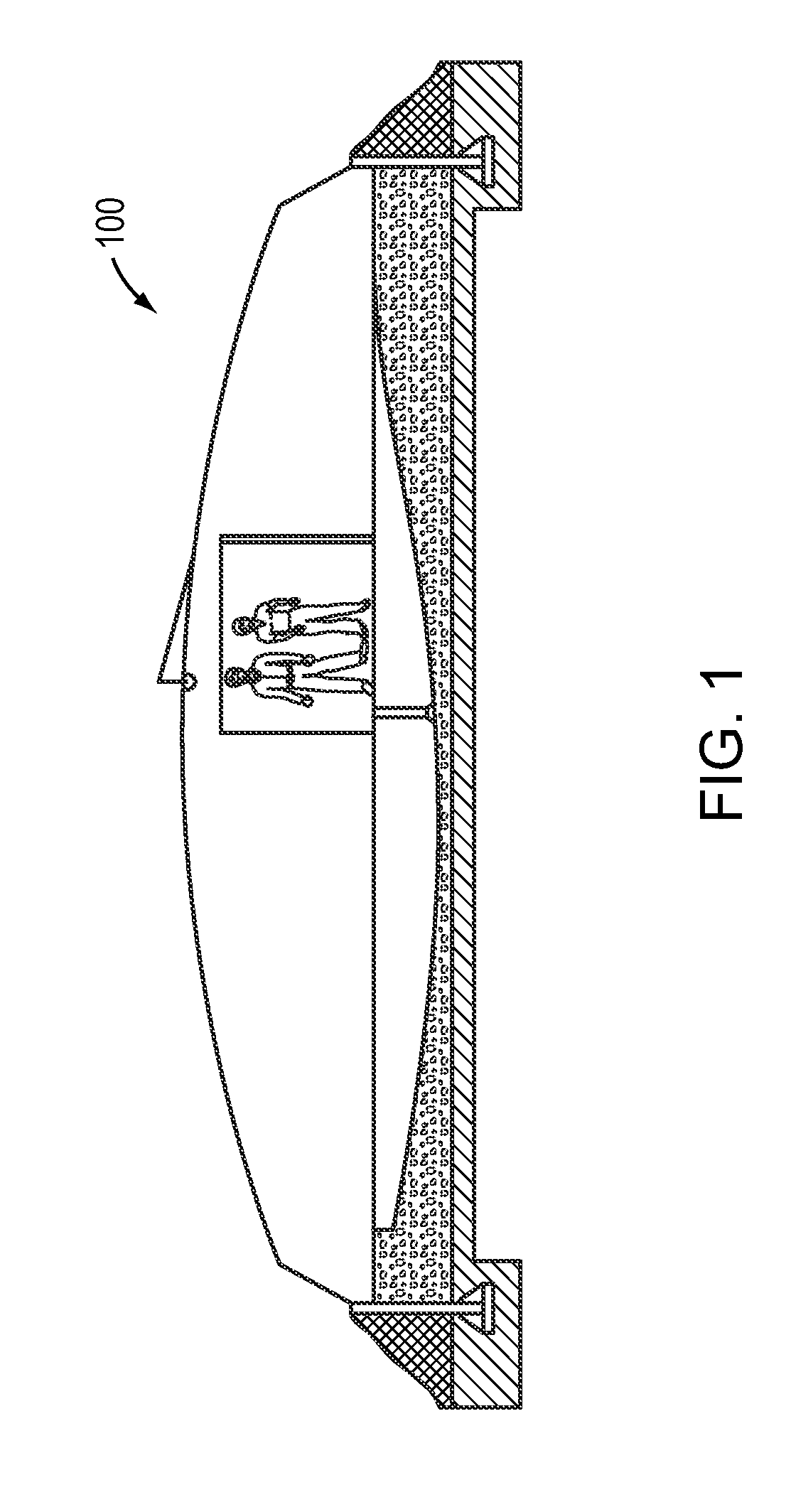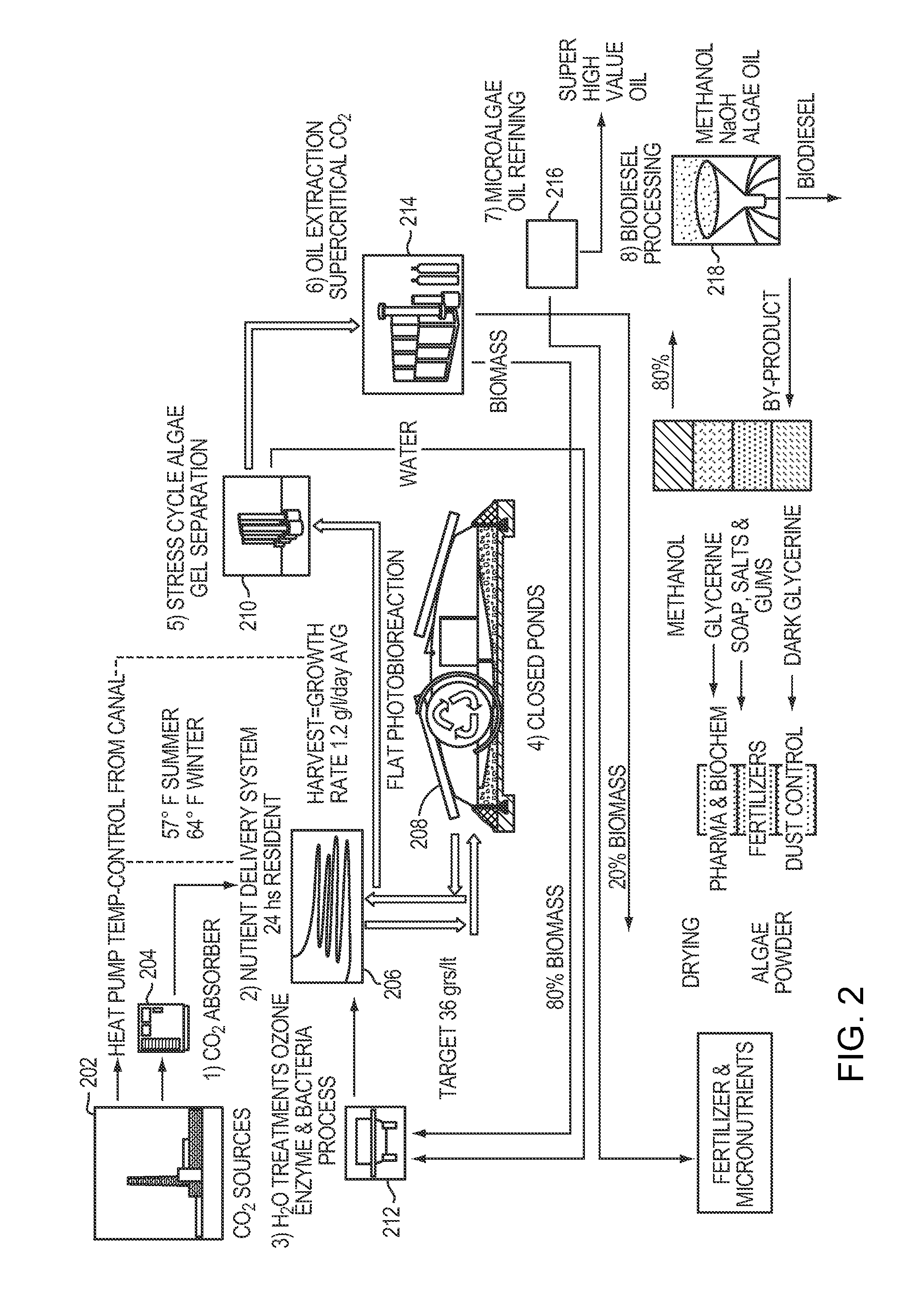Methods and systems for producing lipids from microalgae using cultured multi-species microalgae
a technology of microalgae and lipids, which is applied in the field of oil production using microalgae, can solve the problems of low mass transfer rate, limited biomass productivity and efficiency, and large footprint, and achieves improved resistance to predator species, increased quality, and the effect of large quantity
- Summary
- Abstract
- Description
- Claims
- Application Information
AI Technical Summary
Benefits of technology
Problems solved by technology
Method used
Image
Examples
example 1
Determination of Fatty Acid and Sterol Composition
[0063]Microalgae were cultured and harvested, and lipids were extracted as described herein. The fatty acid composition, sterol composition, acidity, iodine index, and phosphorous content was determined on a microalgae oil sample. Acidity was determined using a Norma IRAM 5512; phosphorous content in parts per million (ppm) was determined using AOCS Ca 12-55; iodine index was determined using a Norma IRAM 5512; sterol composition was determined using a Norma IRAM 5660; and fatty acid composition was determined by gas chromatography using a Norma IRAM 5651.
[0064]Acidity, determined as a gram per 100 g expressed like oleic acid, was 0.50; iodine was 123.3; and no phosphorous was detected in the sample (see Appendix A).
[0065]The composition of fatty acids was determined by gas-liquid chromatography of fatty acid methyl esters. The results shown in Table 3 are expressed in grams fatty acid per 100 grams of methyl ester.
TABLE 3Fatty Acid ...
example 2
Biodiesel Analysis
[0067]Microalgae were cultured and harvested, and lipids (oil) were extracted and converted into biodiesel (also referred to herein as algadiesel) as described herein. An algae biodiesel (B100) sample was analyzed for cloud point, flammability, water content, viscosity, density, acid number and iodine value. The results of this analysis are presented in Table 5.
TABLE 5Algadiesel AnalysisCloud Point −12° C. / 10° F.reportFlammability52.9-53° C. / 127.4° F.report (greater than 120° F.desirable)Water Content 0.05%max 0.05% (Europe0.075%)Viscosity @40 deg C. 3.736 cst1.9-6 (diesel typical 2-4)Density @15 deg C. 0.895reportAcid Number 0.2max 0.5 mg / gIodine Value32.5max 120 (lower the better)
[0068]The cloud point values presented in Table 5 can be compared to cloud point values for #2 diesel (without additives) (e.g., −10° C. / 15° F.), soy (e.g., 2° C. / 35.6° F.), and canola (e.g., −2° C. / 28.4° F.).
example 3
Biodiesel Analysis by Two-Dimensional Gas Chromatography with Flame Ionization Detection
[0069]A microalgae biodiesel (B100) sample was obtained following harvesting, gelification, extraction, and conversion into biodiesel as described herein. Based on visual inspection, the B100 sample was light yellow, free of particulates, and had a viscosity typical of petroleum diesel and on the low end of typical biodiesel samples.
[0070]To determine the composition and the purity of the microalgae biodiesel B100 sample, it was analyzed by two-dimensional gas chromatography with flame ionization detection (GC×GC-FID) (see, e.g., DeMello, J. A. et al. (2007) “Biodegradation and environmental behavior of biodiesel mixtures in the sea: An initial study,”Marine Pollution Bulletin 54:894-904.) GC×GC-FID analysis indicated that the B100 sample was composed of a suite of fatty acid methyl esters (FAMEs) with carbon chain lengths from 14 carbons with zero double bonds (labeled 14:0) to 22 carbons with z...
PUM
| Property | Measurement | Unit |
|---|---|---|
| pH | aaaaa | aaaaa |
| concentration | aaaaa | aaaaa |
| temperature | aaaaa | aaaaa |
Abstract
Description
Claims
Application Information
 Login to View More
Login to View More - R&D
- Intellectual Property
- Life Sciences
- Materials
- Tech Scout
- Unparalleled Data Quality
- Higher Quality Content
- 60% Fewer Hallucinations
Browse by: Latest US Patents, China's latest patents, Technical Efficacy Thesaurus, Application Domain, Technology Topic, Popular Technical Reports.
© 2025 PatSnap. All rights reserved.Legal|Privacy policy|Modern Slavery Act Transparency Statement|Sitemap|About US| Contact US: help@patsnap.com



